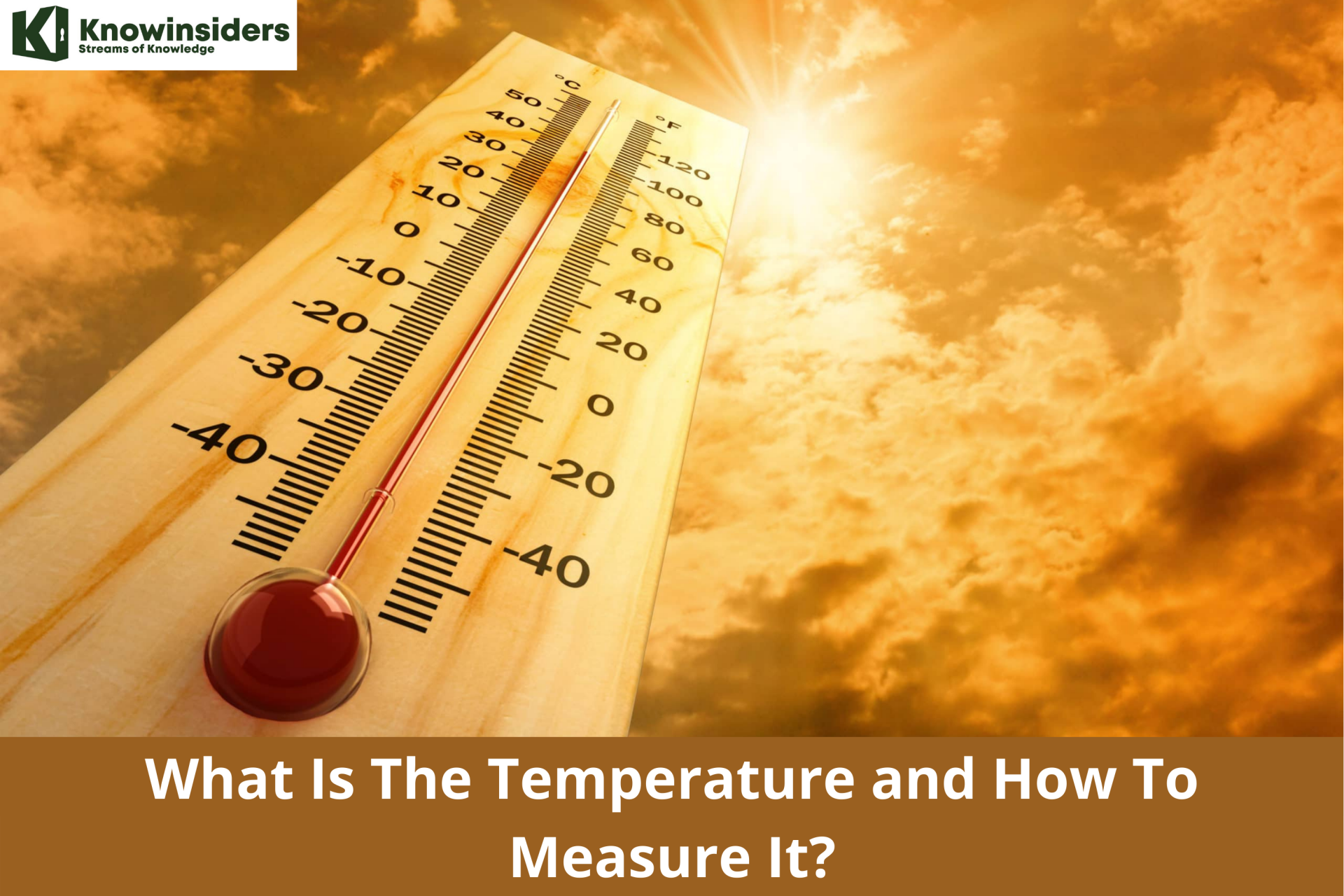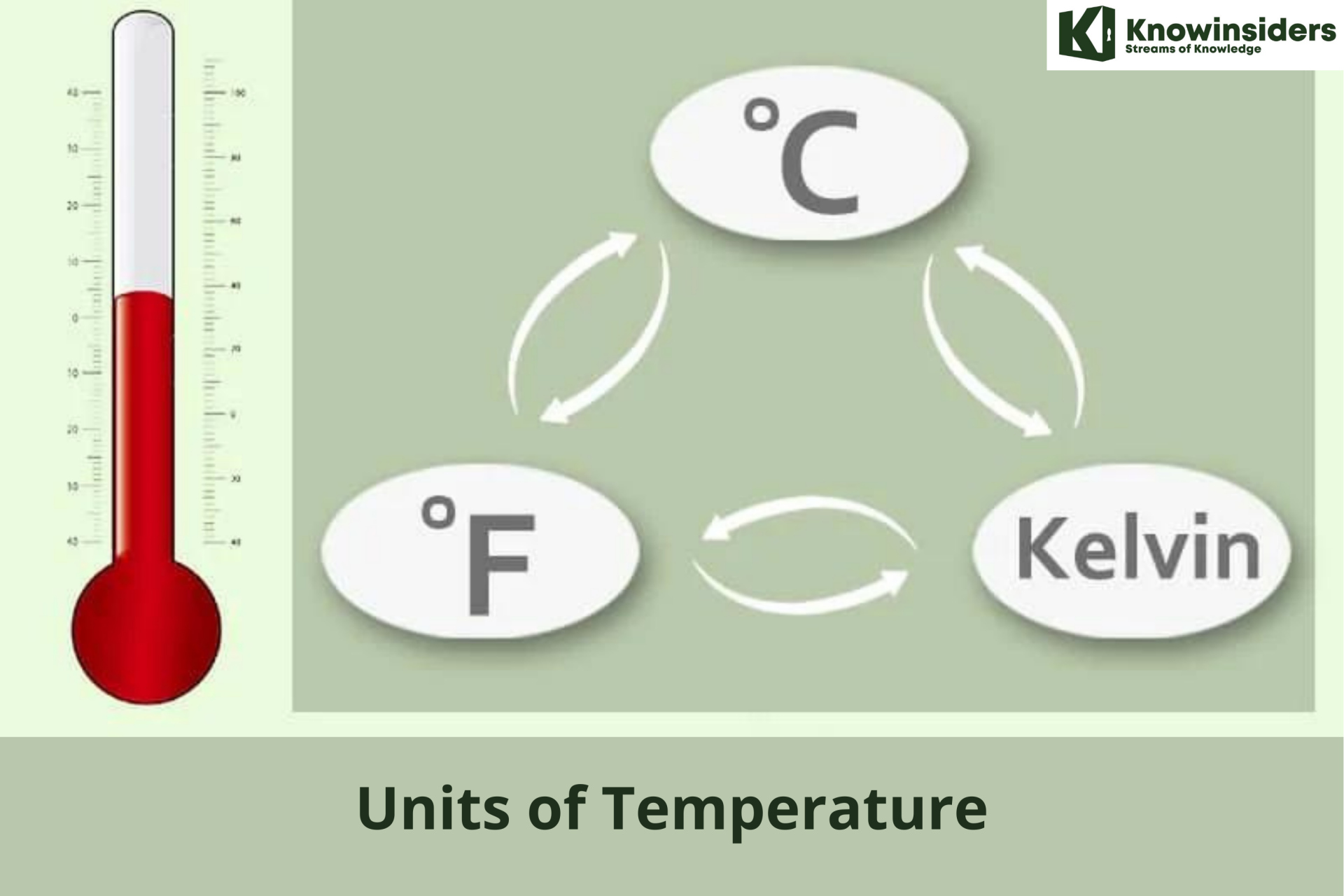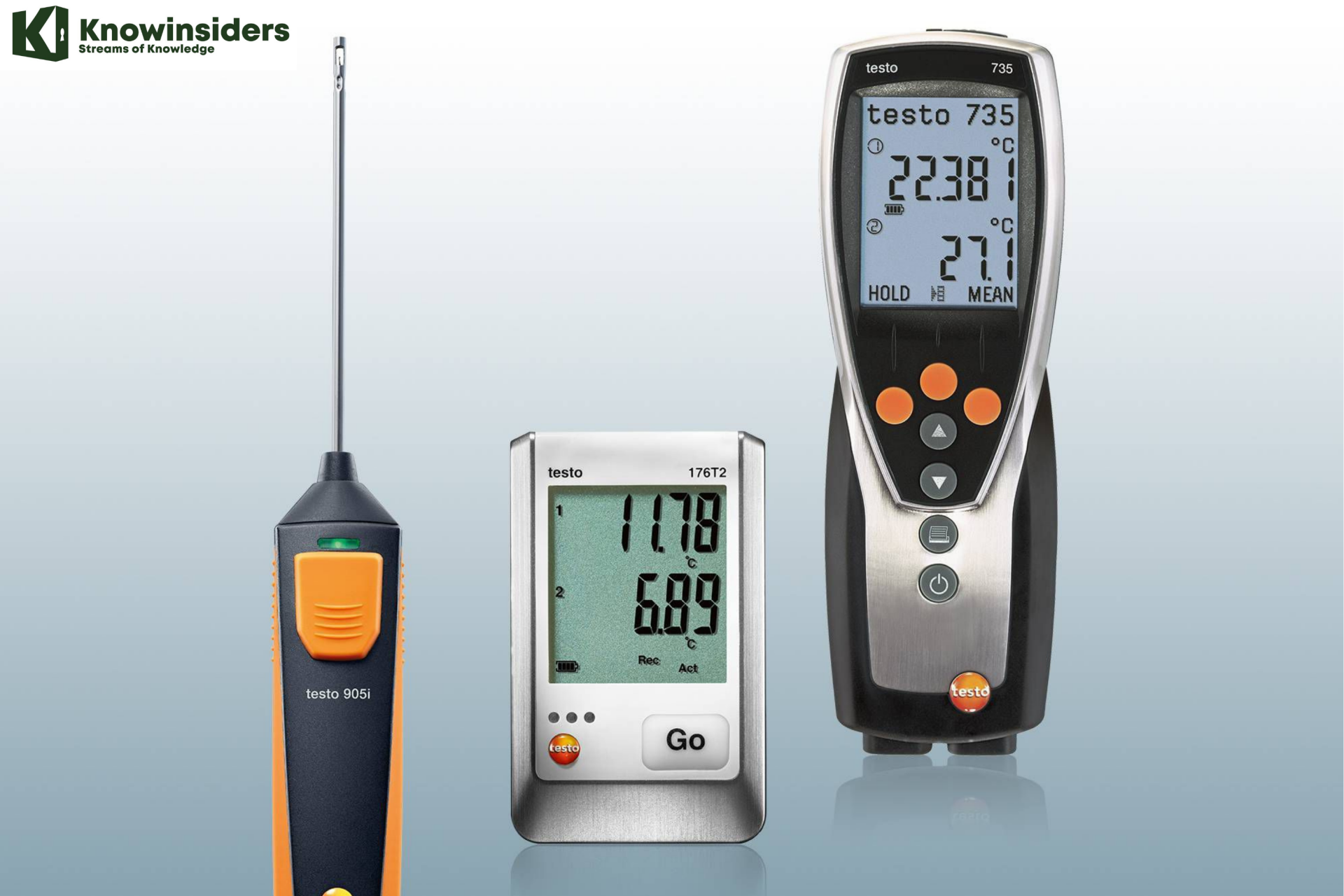What Is The Body Temperature - How To Measure It?
 |
| What Is The Temperature and How To Measure It? |
| Contents |
One of the fundamental physics measurements, temperature is extremely necessary for all forms of life. Yet as you'll see, things may get really strange at extremely high and low temperatures. So what precisely is temperature? You understand what it's like to wait outdoors in the cold for the bus, after all. You're also familiar with how a hot bath feels.
What is Temperature?
The hotness is described by temperature. But, in physics, the average kinetic energy of a substance's molecules is used to describe temperature. A substance's molecules will have more kinetic energy if its temperature is higher.
The term "temperature" refers to a measurement of an object's average kinetic energy, which is a category of energy linked to motion and used to describe how hot or cold an object is. But how hot and how frigid are they exactly? Hot and cool are not really scientific concepts. We must use temperature if we truly want to describe how hot or cold something is. How hot, for instance, is melted iron? A physical scientist would check the metal's liquid state's temperature to find the answer. It is less confusing to use temperature instead of phrases like hot or cold.
What is Body Temperature?
Your body's ability to produce and release heat is indicated by your body temperature. Even when the outside temperature is changing rapidly, the body is quite adept at maintaining its internal temperature within a safe range.
- When you are too hot, the blood vessels in your skin widen to carry the excess heat to your skin's surface. You may start to sweat. As the sweat evaporates, it helps cool your body.
- When you are too cold, your blood vessels narrow. This reduces blood flow to your skin to save body heat. You may start to shiver. When the muscles tremble this way, it helps to make more heat.
Numerous locations on your body can be used to gauge your body temperature. The mouth, the ear, the armpit, and the rectum are the most typical ones. On your forehead, you can also take a temperature reading.
Temperature readings on thermometers are displayed in either degrees Fahrenheit (°F) or degrees Celsius (°C). Temperatures are frequently expressed in degrees Fahrenheit in the United States. Most other nations use degrees Celsius as the standard.
What is a normal body temperature?About 98.6 degrees Fahrenheit (°F) or 37 degrees Celsius (°C) is considered to be the average body temperature. Typically, the ambient temperature ranges between 1° and 2°F (or 12° and 1°C). Typically, a normal temperature is lower in the morning and rises throughout the day. It peaks in the late afternoon or early evening. |
What are Units of Temperature?
 |
| Photo: KnowInsiders |
The temperature is measured in degrees Celsius. To measure temperature, a variety of scales and units are used. The most popular among them are Kelvin, Fahrenheit, and Celsius or centigrade (°C), respectively (K). In the International System of Units, Kelvin is regarded as the fundamental unit of temperature (SI). The Celsius scale is typically used extensively, with 0°C and 100°C standing for the freezing and boiling points of water at sea level, respectively. A thermometer is used to determine temperature. The freezing and boiling points of water are 32°F and 212°F, respectively, on the Fahrenheit scale. The United States is where this scale is primarily used.
Fahrenheit: The first Precise Thermometer
Daniel Gabriel Fahrenheit, a Dutch physicist, inventor, and manufacturer of scientific instruments, unveiled a mercury-based thermometer in 1714. Because it is a liquid metal, mercury changes size in response to temperature. Fahrenheit observed the mercury rise and fall as it was exposed to various temperatures by placing it in a closed tube marked with a numbered scale. The first practical, accurate thermometer was this one, according to The Royal Society in the UK.
Ole Roemer, a Danish scientist, developed an alcohol-based thermometer on which Fahrenheit based his invention. Ulrich Grigull, the late director of the Institute for Thermodynamics at the Technical University of Munich in Germany, wrote about Roemer's temperature scale in a 1986 conference presentation. Roemer marked his temperature scale with zero marked at the temperature where brine (saltwater) froze and 60 as the point at which water boiled. A human body registered at 22.5 degrees on the Roemer scale, while the ice melted at 7.5.
But the thermometer of Fahrenheit was much more exact. In order to divide each marker on the scale into finer increments, he roughly multiplied the scale by four. He used the same freezing and boiling reference points as Roemer's scale, which he referred to in his writings as "Extreme Cold" and "Extreme Hott." According to Grigull, there were four reference points on the Fahrenheit scale: 0 (at the combined freezing temperature of brine), 30, the freezing point of ordinary water, 90, and 240. (the boiling point of water).
In the year 1724, Fahrenheit published a paper in the journal Philosophical Transactions outlining his scale. Fahrenheit was admitted into the Royal Society, the country's national science academy, in the same year. His membership in the Royal Society led to his thermometer and scale receiving particular acceptance in England, and later also in North America and the British Empire, according to Grigull. The British Empire traveled the globe while using Fahrenheit's measurement system, which is occasionally referred to as an element of the imperial system.
Today, only a small number of nations still measure temperature in Fahrenheit. According to the online geography resource World Atlas, the United States and its territories, along with the Bahamas, Palau, Belize, the Cayman Islands, the Federated States of Micronesia, and the Marshall Islands, have continued to use the temperature scale despite the rest of the world switching to the Celsius scale.
The Fahrenheit scale was revised to improve its accuracy after Fahrenheit's passing in 1736. Without salt, plain water's precise freezing and boiling points were recorded as 32 and 212 degrees Fahrenheit, respectively. The temperature of a healthy human body was measured at 98.6.
°F, or just F, is a common way to express a temperature in Fahrenheit.
Celsius: A More Scientific Scale
Olof Beckman, a solid-state physicist at Uppsala University in Sweden, stated that Anders Celsius "should be recognized as the first to perform and publish careful experiments aiming at the definition of an international temperature scale on scientific grounds." According to the U.S. National High Magnetic Field Laboratory, the Swedish astronomer Celsius is credited with discovering the relationship between the aurora borealis, also known as the Northern Lights, and the Earth's magnetic field as well as a method for calculating the brightness of stars.
In 1742, Celsius proposed a scale based on two fixed points: 0 (the boiling point of water) and 100. He made this suggestion to the Royal Swedish Academy of Sciences (the freezing point of water). According to The Legacy of Anders Celsius in JSTOR Daily, a digital library, after Celsius' passing in 1744, the renowned Swedish taxonomist Carl Linnaeus suggested that the fixed points be reversed, with 0 designating the freezing point of water and 100 its boiling point. Additionally, negative numbers are now included on the scale.
Since there are 100 points between water freezing and boiling, Celsius originally called his scale "Centigrade" from the Latin for "one hundred" ("centi") degrees ("grade"). According to the U.S. National Institute of Standards and Technology, a global conference on weights and measures (Conference General des Poids et Measures) changed the name to "Celsius" in 1948 in honor of Anders Celsius (NIST).
The metric system, also known as the International System of Units, includes the Celsius scale (SI). The symbols °C or simply C can be used to express temperatures in Celsius as a number of degrees.
Between boiling and freezing on the Celsius scale is 100 degrees, whereas in Fahrenheit it is 180 degrees. As a result, one degree Celsius is equivalent to 1.8 degrees Fahrenheit. Both scales have the same value at -40 degrees: -40 C = -40 F.
Kelvin: An Absolute Scale For Scientists
William Thomson (also known as Lord Kelvin), a British mathematician and scientist, proposed an absolute temperature scale in 1848 that was unaffected by the characteristics of a substance like ice or the human body. He asserted that the universe could have a much wider range of temperatures than those suggested by Celsius and Fahrenheit. According to NIST, the idea of an absolute minimum temperature was not new, but Kelvin gave it a precise value: 0 kelvins is equivalent to -273.15 C.
According to Julia Scherschligt, an expert in vacuum and pressure metrology at the National Institute of Science and Technology in the United States, "thermodynamic temperature" is different from temperatures based on the freezing and melting points of fluids.
"Temperature in thermodynamics is absolute rather than relating to fixed points. The amount of kinetic energy held by the particles that make up a blob of matter and move about at sub-microscopic scales is described "She spoke. "The particles' motion eventually comes to an end as the temperature falls to a certain level. Absolute zero, the reference point for the Kelvin scale, is here."
At 273.15 C or 459.67 F, absolute zero is reached. Scientists once believed that humans couldn't replicate this temperature (because to become that cold, energy would have to be added to the system to cool it, meaning that the system would be warmer than absolute zero). However, in 2013, German physicists succeeded in lowering particle temperatures to paradoxical levels below absolute zero.
Which Scale Is Best?
Depending on the situation, particularly the community you are sharing information with, there may be a difference in the best scale for measuring temperatures. It is best to use Fahrenheit measurements in the United States because this is how Americans have traditionally used the Fahrenheit scale in their daily lives, including for weather and cooking. However, since Celsius is the scale that is used in the majority of nations, it is preferable to use that system when communicating internationally. The ideal scale for casual use ultimately depends on custom and what those around you are using.
Which scale, though, is the most accurate?
According to Scherschligt, "Precision isn't really a feature of a scale." Instead, a measurement's accuracy is determined by the increments provided by the thermometer being used and the user's technique. "Any scale can be used to measure a number with arbitrary precision. However, only the kelvin is based on physics, making it the most precise scale."
With the right tools and a universal constant, the Kelvin scale, which is based on the physical characteristics of any gas, can be calibrated precisely anywhere in the universe. For this reason, scientists frequently favor using the Kelvin scale in their research.
What is the Temperature on the Moon?On the Moon, the temperature ranges from -298 degrees Fahrenheit (-183 degrees Celsius) at night to 224 degrees Fahrenheit (106 degrees Celsius) during the day (at the equator and mid-latitudes). The Moon's temperature varies significantly during the day and night because it lacks a substantial atmosphere to help block some of the Sun's rays and trap heat. |
How Temperature is Measured?
 |
| Photo: KnowInsiders |
A thermometer is a tool used to measure temperature. A thermometer operates under the premise that when a substance's temperature increases, it expands.
Some substances, like alcohol and mercury, expand more than others. They are therefore employed in thermometers. However, infrared and electronic thermometers have also been developed. Instead of using mercury or alcohol to measure the temperature, they use specialized sensors.
The fluid inside a traditional thermometer expands at a known rate as it gets hotter and contracts at a known rate as it gets cooler to measure temperature. The liquid in a contained tube moves along a scale on the apparatus as the temperature changes. We can trace the roots of the notions about how to measure temperature back to the ancients, as we can with much of modern science.
The Greek mathematician and philosopher Hero (or Heron) of Alexandria (10–70 CE) discussed the connection between temperature and air expansion in his book "Pneumatics" written in the first century CE. Hero's book was published in Europe in 1575 following the invention of the Gutenberg Press, and as a result of its increased accessibility over the course of the following century, the earliest thermometers were developed.
How Thermometer Invented?
One of the first scientists to be known to have used a thermometer was the Italian astronomer Galileo (1564–1642). It is unknown whether he created the device himself or simply used a design that someone else had already developed. At least as early as 1603 he employed a thermoscope to gauge the degree of heat and cold.
Various scientists attempted to develop thermometers that measured temperature by a change in pressure inside a contained measurement device throughout the 1600s. The first thermometer was created in 1638 by English physician Robert Fludd (1574-1637), who constructed a thermoscope with a temperature scale integrated into the device's physical design.
Due to the lack of a centralized system of measurement, each of these scientists created their own measurement scales, but until the Dutch-German-Polish inventor and physicist Daniel Gabriel Fahrenheit (1686-1736) built him in the early 1700s, none of them really took off. Although he created an alcohol-based thermometer in 1709, it was actually his mercury-based thermometer from 1714 that established the industry standard for measuring temperature.
Where is the Highest Temperature in the world?
 |
| Photo: KnowInsiders |
Exactly 90 years after it had been set at El Azizia, Libya, with a measurement of 58°Celsius, the World Meteorological Organization disqualified the record for the highest recorded temperature on September 13, 2012, at that time. The current record high temperature is 56.7°C (134°F), which was attained in Death Valley, California, USA, on July 10, 1913.
Following an investigation in 2012, the World Meteorological Organization (WMO) came to the conclusion that the El Azizia record measurement could be off by as much as 7°C due to a number of factors, including the asphalt-like surface over which the measurement was taken, which is not a fair representation of the native desert soil.
"This investigation demonstrates that, because of continued improvements in meteorology and climatology, climate experts can now re-analyze past weather records in much more detail than ever before," said Randy Cerveny, a professor of geography at Arizona State University and a member of the WMO, in 2012.
Added him: "We accept that extreme temperature record from Death Valley. We will be ready to launch an investigation if any new information about it surfaces, but as of right now, all available evidence points to its legitimacy."
The appropriately named Furnace Creek in Death Valley experiences air temperatures that soar to an astounding 115°F on a daily average, making Death Valley the hottest place on Earth.
The temperature is even hotter on the ground: on July 15, 1972, a measurement of 201°F was made, which is only 11 degrees below the boiling point of water.
The fact that Death Valley is about 190 feet below sea level and the air warms as it descends is one of the reasons it has the hottest temperature ever recorded.
Additionally, the desert valley receives less than three inches of rain annually.
Interesting facts about temperatureIn universe temperatures range from about 3,500,000,000 Kelvin (a supernova) to 3 Kelvin (space). Sun is known to be a class G yellow star. The average surface temperature of the Sun is 5,600 Kelvin. Absolute zero is the coldest theoretical temperature. Reaching this temperature substance does not possess any heat energy. It has been defined as zero Kelvin (0 Kelvin) which is found to be equivalent to -273.16 degrees Celsius and -459.69 degrees Fahrenheit. The temperature of a substance has been defined as a result of the speed at which its molecules move. The theory states that the faster the molecules will move, the higher the temperature of the substance will be. A very notable fact is that Fahrenheit and Celsius are equal at -40 degrees. Temperature affects the physical properties of materials whether it is solid, liquid, gaseous, or plasma: density; solubility; vapor pressure, and electrical conductivity. It affects the rate and extent to which chemical reactions take place. Temperature affects the amount as well as properties of thermal radiation which emits from the surface of an object. 57.8 °C (136 °F) is the hottest temperature ever recorded on Earth. It was recorded on September 13, 1922, in Al ‘Aziziyah located in Libya. −89.2 °C (−128.6 °F) is the coldest temperature ever recorded on Earth. It was recorded at Vostok Station located in Antarctica on July 21, 1983. Conduction (occurs in solid), convection (occurs in liquid) and radiation (takes place through space) are the three processes of transferring heat from a substance at a higher temperature to one at a lower temperature. |
 What Is Mortgage Insurance and How Does It Work? What Is Mortgage Insurance and How Does It Work? What is mortgage insurance, how it works, and what are its benefits? Scroll down to understand more details about the advantages of mortgage insurance. |
 What Are Computer Viruses And How Do They Spread? What Are Computer Viruses And How Do They Spread? Computer viruses can be a nightmare with so many people in the world using computers. So what it is, how it spread and how to ... |
 What Is A Money Market Account? What Is A Money Market Account? When it comes to money and savings, it is important to understand how things work, if you choose to open a Money Market Account. |


























